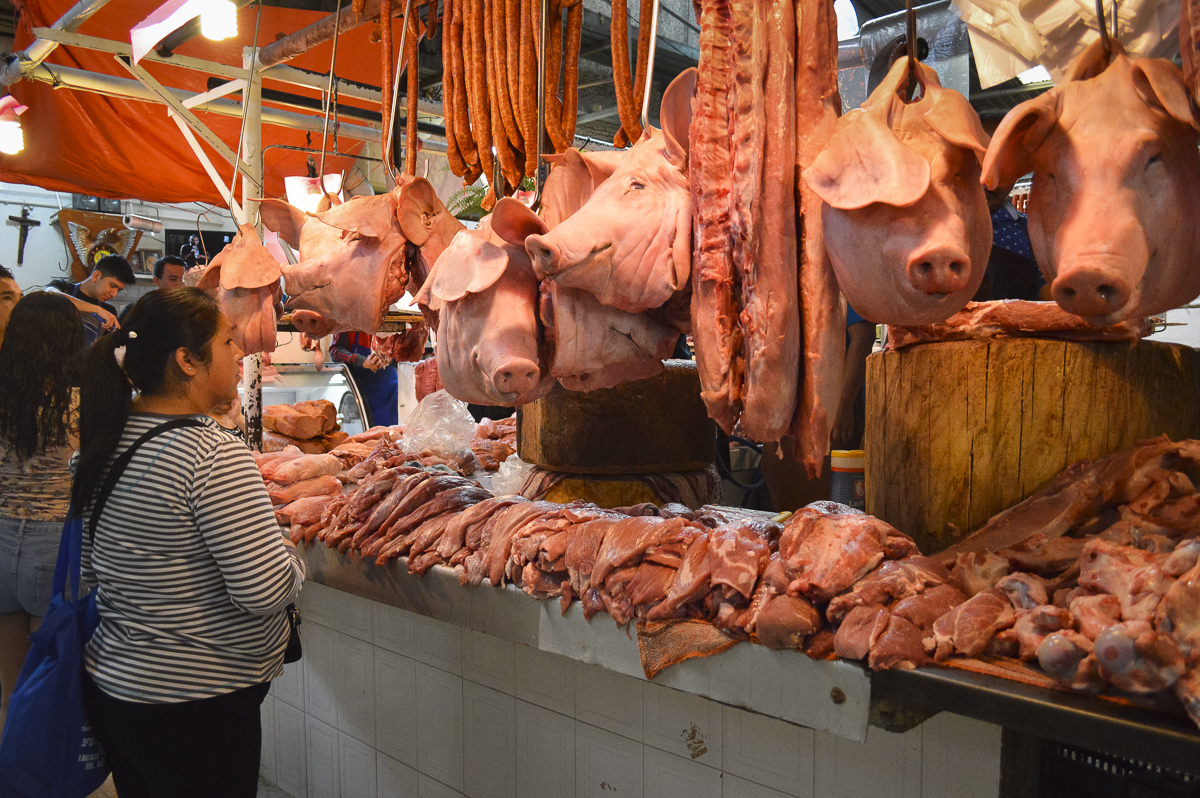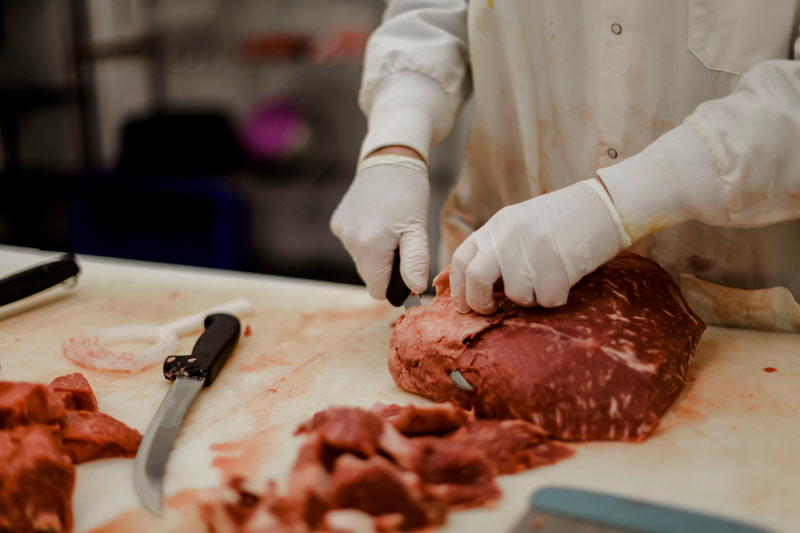Check Out the Regional Taste at Bagley Farms Meat Market Edwardsville IL: Fresh and Delicious
Check Out the Regional Taste at Bagley Farms Meat Market Edwardsville IL: Fresh and Delicious
Blog Article
Discover the Art of the Butcher's Cut in a Modern Meat Market
In the ever-evolving landscape of modern-day meat markets, the butcher's cut has actually transcended its conventional origins, combining olden workmanship with modern methods. What really establishes the contemporary butcher apart is their ability to create a deeper connection in between customers and the origins of their meat.
Advancement of Butchery Methods

The mid-20th century saw butchery strategies additionally fine-tuned by scientific insights right into muscular tissue biology and meat aging, boosting both inflammation and preference. Innovations like vacuum product packaging and refrigeration prolonged product shelf-life, permitting butchers to expand offerings and enhance high quality control. This period additionally noted the rise of specialized tools, such as band saws and meat slicers, which boosted precision and performance in meat handling.
The 21st century has introduced electronic innovation into the butchery realm. Electronic systems now assist in tracking pet provenance and maximizing cuts to satisfy specific consumer preferences. In addition, a resurgence in artisanal butchery has actually emerged, mixing conventional abilities with modern-day understanding to deal with customers looking for ethical and lasting meat choices. This evolution highlights a dynamic interplay in between tradition and innovation, conference contemporary needs while protecting the craft's heritage.

Comprehending Meat Cuts

Recognizing the ins and outs of meat cuts is necessary for both butchers and customers looking for top quality and worth. Each cut originates from a various part of the animal, presenting special flavors, textures, and food preparation techniques. Mastery of these differences not just improves culinary experiences but additionally maximizes the energy of each carcass. For butchers, exact cuts reflect ability and regard for the craft, guaranteeing minimal waste and optimum yield.
The main categories of meat cuts consist of primal, sub-primal, and retail cuts. Primal cuts, such as the loin, rib, and chuck, are the large sections initially divided from the carcass. Butchers then break these down further right into sub-primal cuts, prior to lastly generating retail cuts offered to customers, like ribeye or tenderloin. Each stage calls for careful interest to anatomical structure and muscular tissue structure.
Recognizing muscle structure is crucial; muscle mass made use of much more regularly by the pet tend to be tougher and are best matched for slow cooking approaches, while less-used muscles, like those discovered in the loin, are a lot more tender and perfect for grilling or roasting. Experience with these differences encourages consumers to make informed options, boosting their culinary ventures.
Picking High Quality Meat
Picking the appropriate meat entails even more than just picking a visually appealing item from the display screen. The art of picking top quality meat calls for a critical eye and understanding of certain qualities that represent freshness and excellence. Pay interest to the color; beef should have a bright, cherry-red tone, while lamb must display a soft pink tone, and pork a pale pink. This shows the meat is fresh and hasn't been revealed to oxygen for as well long.
Secondly, take into consideration the marbling, which refers to the white streaks of fat within the muscle. Correct marbling is an essential indicator of inflammation and flavor, as it thaws during food preparation, enhancing the meat's juiciness. Keep in mind, higher marbling usually correlates with exceptional high quality cuts, such as USDA Prime.
Texture is one more crucial variable; meat should feel strong to the touch, not slimed or extremely soft. Additionally, bear in mind the scent. Fresh meat needs to have a tidy, neutral scent, without any sour or repulsive odors.
Pairing Cuts With Cooking Techniques
Successfully pairing cuts of meat with the ideal food preparation techniques is important for attaining optimal flavor and structure. Various cuts vary in tenderness, marbling, and connective cells web content, each requiring you can find out more certain strategies to open their potential. Tender cuts like filet mignon and ribeye, with their have a peek at these guys integral marbling, advantage from high-heat, quick-cooking methods such as grilling or pan-searing. These techniques boost the meat's all-natural tastes and ensure a juicy finish.
Conversely, tougher cuts like brisket and chuck roast are rich in collagen, which breaks down into gelatin when cooked slowly. These cuts are perfect for braising or slow roasting, enabling the meat to tenderize in time and establish deep, complicated flavors. Cuts such as brief ribs and pork shoulder make out well with slow-cooking approaches, where prolonged cooking times transform their robust textures right into delicious recipes.
Lamb shanks and oxtail, which need extended cooking to tenderize, are perfect prospects for cooking or slow-moving simmering. These techniques coax out rich, hearty tastes while preserving moisture. By understanding the one-of-a-kind features of each cut, cooks and home cooks alike can boost their cooking productions, making certain each meal is both pleasing and remarkable.
The Butcher's Role Today
Navigating the advancing landscape of the contemporary meat market, the butcher's role today expands past simple preparation of cuts. Contemporary butchers are cooking artisans, educators, and supporters for sustainable techniques. They connect the void between the ranch and the fork by making sure find more ethical sourcing, comprehending animal husbandry, and focusing on openness in the supply chain. This shift mirrors the expanding customer demand for top quality over quantity, where provenance and pet welfare are extremely important.
In enhancement to crafting accurate cuts, butchers currently engage directly with consumers, offering cooking recommendations and customizing selections to fit specific needs and preferences. Their competence in meat aging, marbling, and taste profiles equips customers to make enlightened decisions, improving their cooking experiences. This tailored service exemplifies the butcher's progressing duty as a trusted advisor in the kitchen area.
Additionally, butchers are pivotal in reducing waste, using entire pets to develop varied items such as sausages and stocks - bagley farms meat market edwardsville il. This extensive technique not just values the pet yet also aligns with contemporary sustainability goals. This way, the contemporary butcher personifies both practice and technology, adjusting to an ever-changing market while preserving the artistry and integrity of their craft

Conclusion
The modern butcher's craft elaborately weaves conventional strategies with contemporary developments, emphasizing lasting practices and moral sourcing. Mastery in understanding varied meat cuts and high quality indicators encourages butchers to offer informed referrals, aligning details cuts with ideal cooking techniques. This knowledge not just raises cooking experiences however also enhances the link between customers and the origins of their food. By recognizing historical methods while embracing modern demands, the butcher's duty remains essential in today's advanced meat market.
Report this page